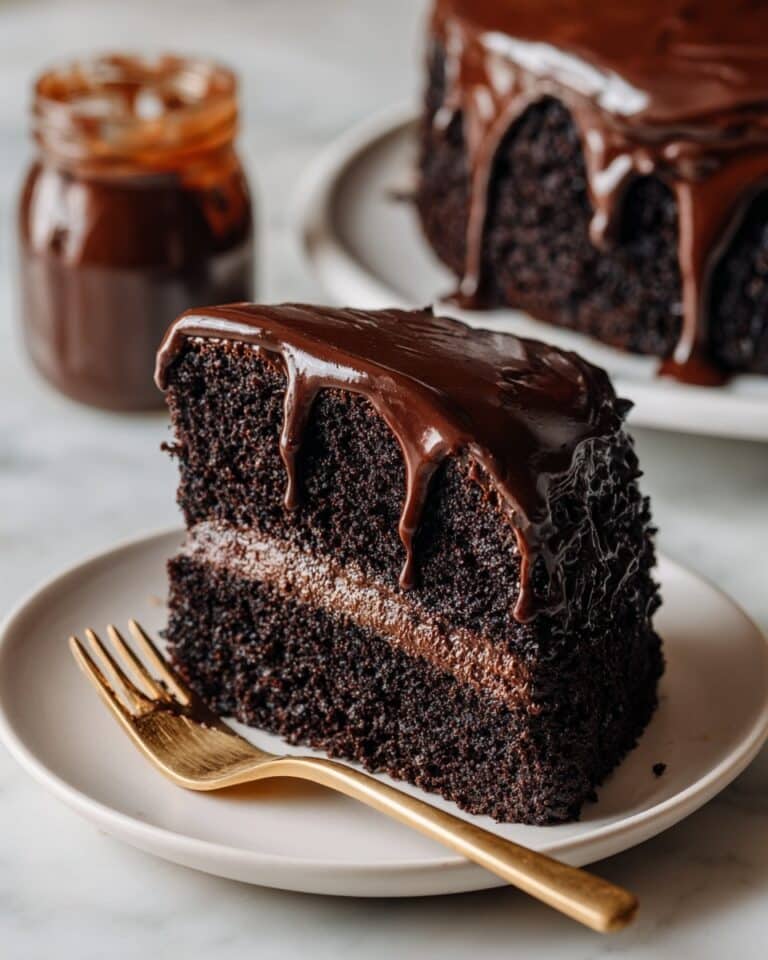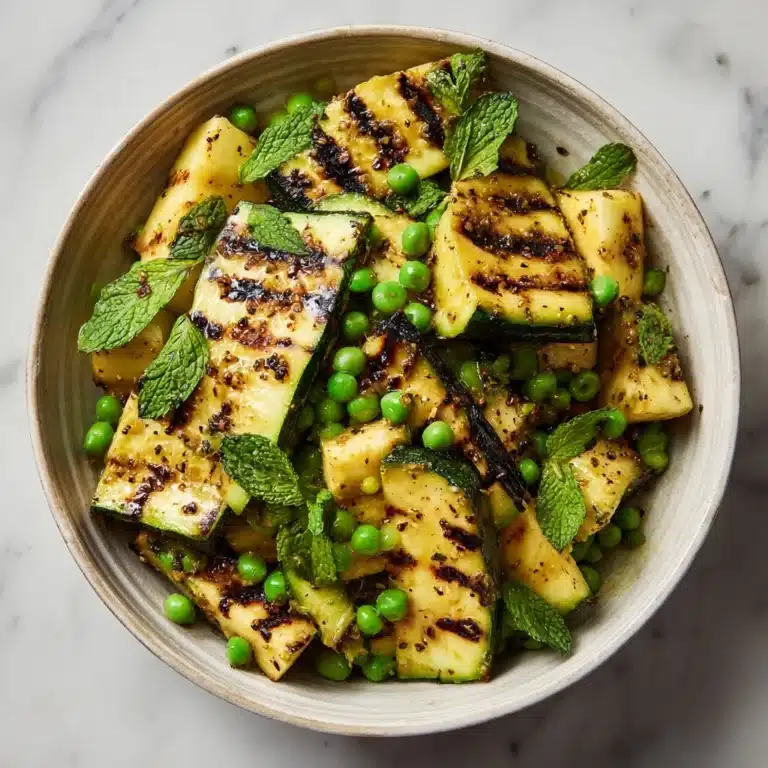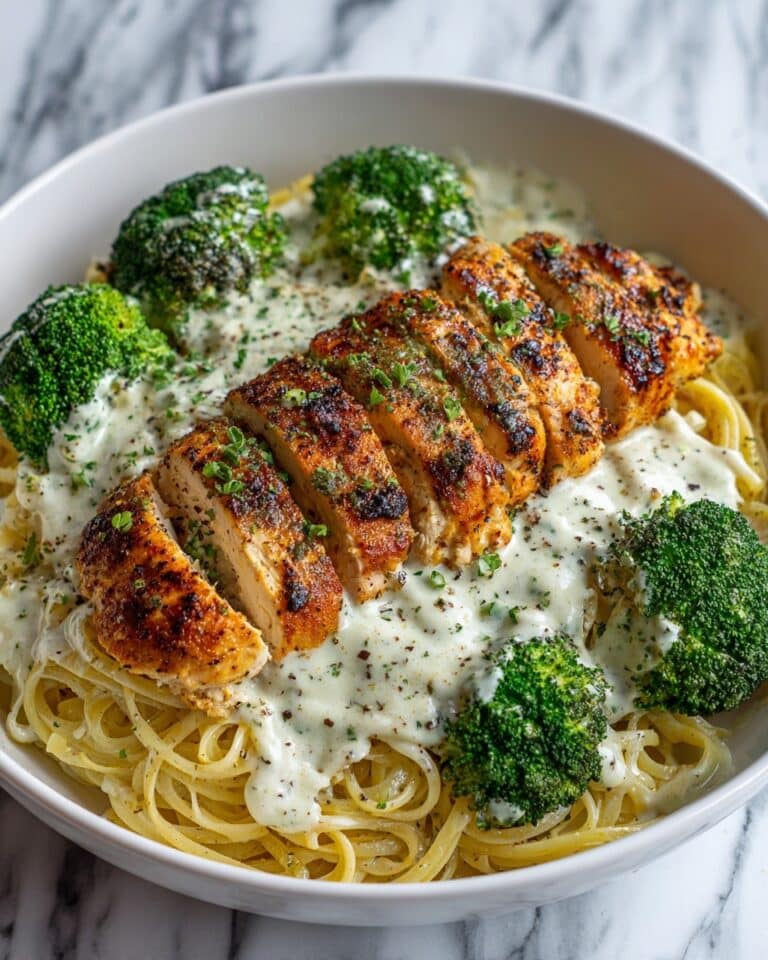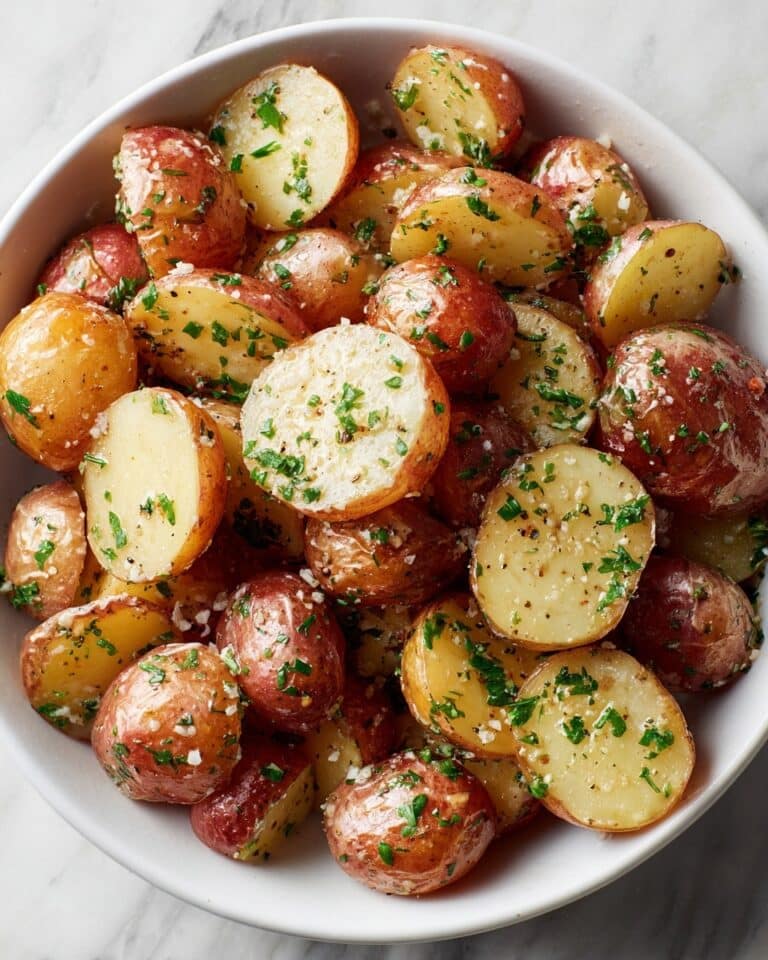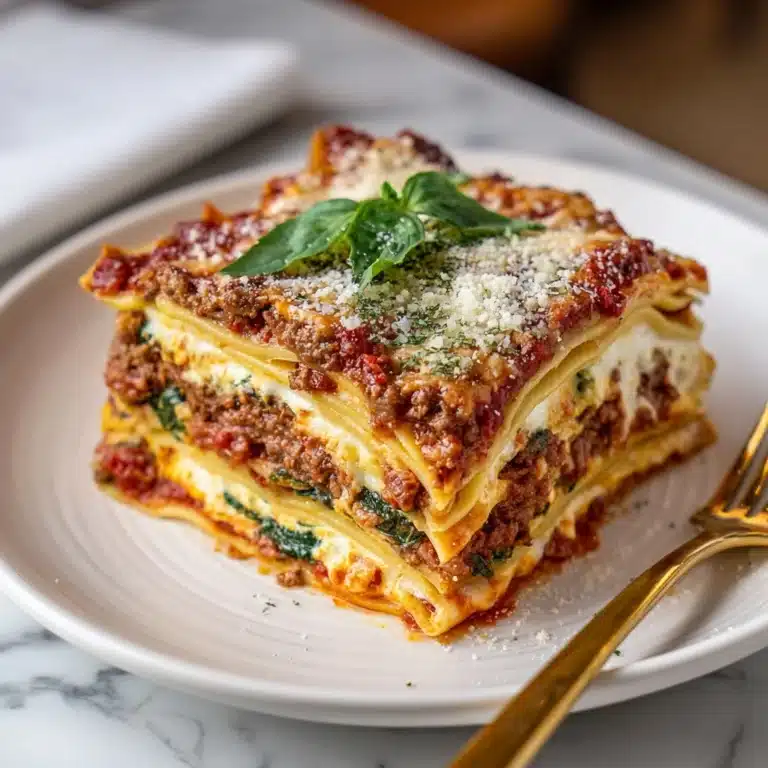Mango Sticky Rice: The Ultimate Guide to Thailand’s Sweet Treat Recipe
If you’ve ever yearned to taste a slice of tropical heaven, look no further than Mango Sticky Rice: The Ultimate Guide to Thailand’s Sweet Treat Recipe. This delightful dessert marries velvety coconut-infused sticky rice with juicy, fragrant mango slices, creating a symphony of textures and flavors that feel like a warm hug from Thailand itself. Whether you’re a seasoned home cook or a curious newbie, this recipe will walk you through every loving step to bring this authentic Thai classic straight to your table. Get ready for a sweet adventure that’s as simple as it is sensational!
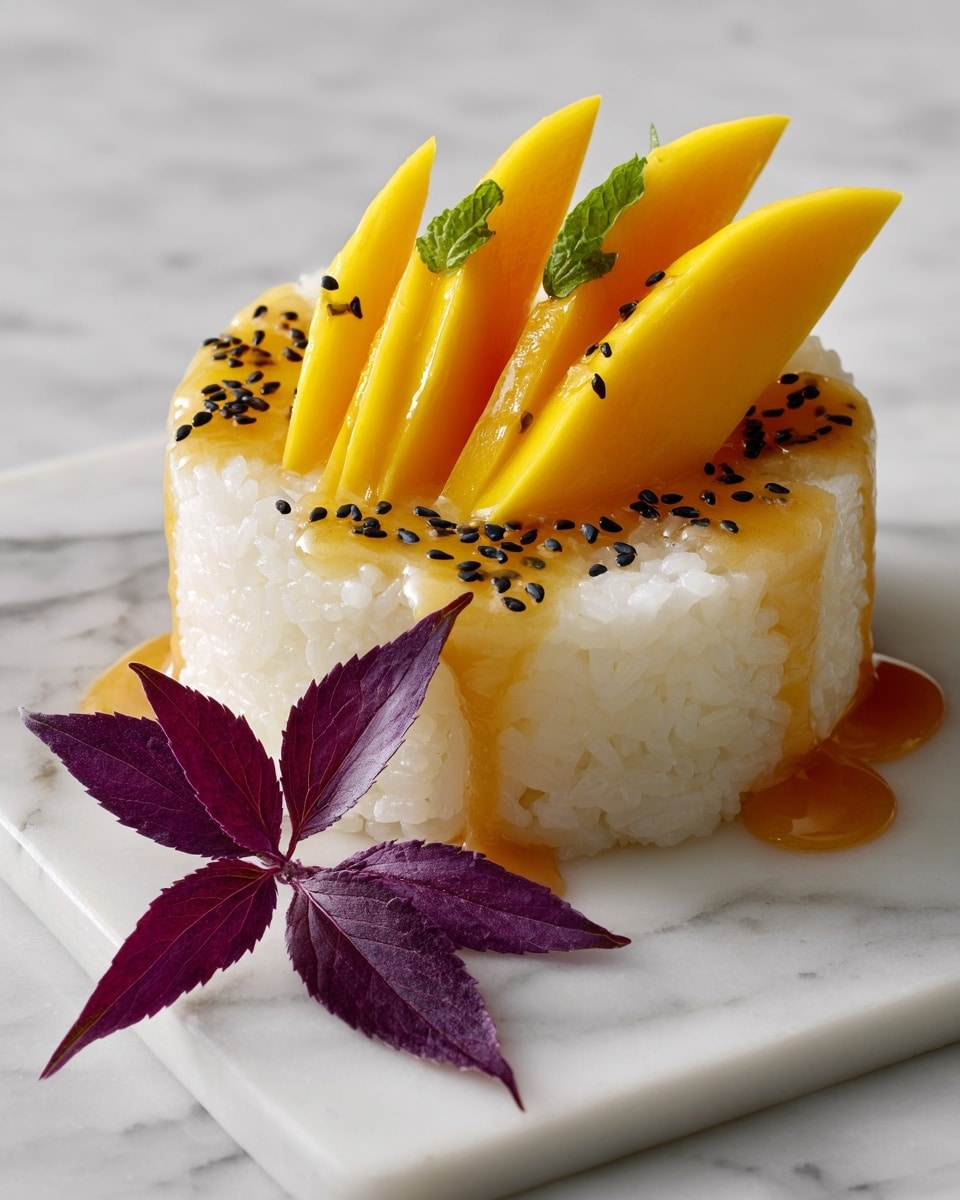
Ingredients You’ll Need
Creating the perfect Mango Sticky Rice is all about balancing simple, quality ingredients that each play a key role. From the sticky glutinous rice that forms the heart of the dessert to the creamy coconut milk that infuses it with richness, every item is essential to building the luscious texture and inviting taste that this dish is famous for.
- Glutinous rice (sweet rice): This sticky rice is essential for that chewy, tender base that clings beautifully to the coconut milk and mango.
- Water for soaking: Soaking softens the rice, ensuring it cooks evenly and achieves the perfect sticky texture.
- Full-fat coconut milk: This ingredient brings the creamy, tropical undertone that harmonizes the whole dish.
- Salt: Just a pinch to balance the sweetness and enhance the coconut’s natural flavor.
- Granulated sugar: Sweetens the coconut milk gently without overpowering the delicate flavors.
- Cornstarch: Used to thicken the luscious mango sauce so it coats the rice and fruit beautifully.
- Cold water for slurry: Combines with cornstarch to ensure a smooth, lump-free sauce.
- Ripe mangoes: Look for fragrant, golden mangoes that are juicy and slightly soft for maximum sweetness.
- Toasted sesame seeds (optional): Adds a subtle nuttiness and delightful crunch as a garnish.
How to Make Mango Sticky Rice: The Ultimate Guide to Thailand’s Sweet Treat Recipe
Step 1: Soak the Rice
Begin by soaking the glutinous rice in water to allow each grain to hydrate fully. Leaving it in the refrigerator for at least 4 hours, or overnight if you can plan ahead, softens the rice so it steams perfectly later on. This step is crucial because uneven soaking can lead to unevenly cooked rice.
Step 2: Drain and Rinse the Rice
After soaking, drain the rice thoroughly and rinse under cold running water until the water runs clear. This helps remove excess starch and prevents the sticky rice from becoming gummy rather than delightfully chewy.
Step 3: Steam the Rice
Line your steamer basket with cheesecloth or parchment paper – this keeps the rice from slipping through the holes! Then gently spread the drained rice evenly. Steam it over boiling water with the lid tightly closed for about 20-25 minutes, or until you notice the grains turn translucent and tender.
Step 4: Check for Doneness
Give the rice a taste test. If the grains aren’t soft and chewy enough, steam for an additional 5-10 minutes. Perfectly cooked sticky rice should have a slight bite but melt in your mouth with richness.
Step 5: Prepare the Coconut Milk Infusion
While your rice steams away, combine the full can of coconut milk with salt and sugar in a saucepan. Heat gently until just simmering to dissolve everything nicely. This warm, sweetened coconut milk will soak into the rice, making each bite super creamy and fragrant.
Step 6: Infuse the Rice with Coconut Milk
Transfer the hot sticky rice into a bowl, then pour the warm coconut milk over it. Gently fold the mixture to allow every grain to soak up that luscious goodness. Cover and let it rest for 30 minutes to an hour — this waiting time is pure magic as the flavors marry beautifully.
Step 7: Make the Mango Sauce
To add that signature finishing touch, whisk together the remaining coconut milk, salt, and sugar in a saucepan. Slowly incorporate the cornstarch slurry while gently simmering to create a syrupy sauce. This luscious mango sauce will tie the whole dish together with its silky texture.
Step 8: Prepare the Mangoes
Peel your ripe mangoes and slice them into thin, elegant pieces. The sweetness and juiciness of the mango are what make this dessert unforgettable, so choose fruits that make you smile just by looking at them!
Step 9: Plate and Garnish
Scoop generous portions of that coconut-kissed sticky rice onto your plate and lay the mango slices beside it. Drizzle the warm mango sauce over the top and sprinkle toasted sesame seeds if you like a little extra texture and nutty hint. Now it’s time to dig in!
How to Serve Mango Sticky Rice: The Ultimate Guide to Thailand’s Sweet Treat Recipe
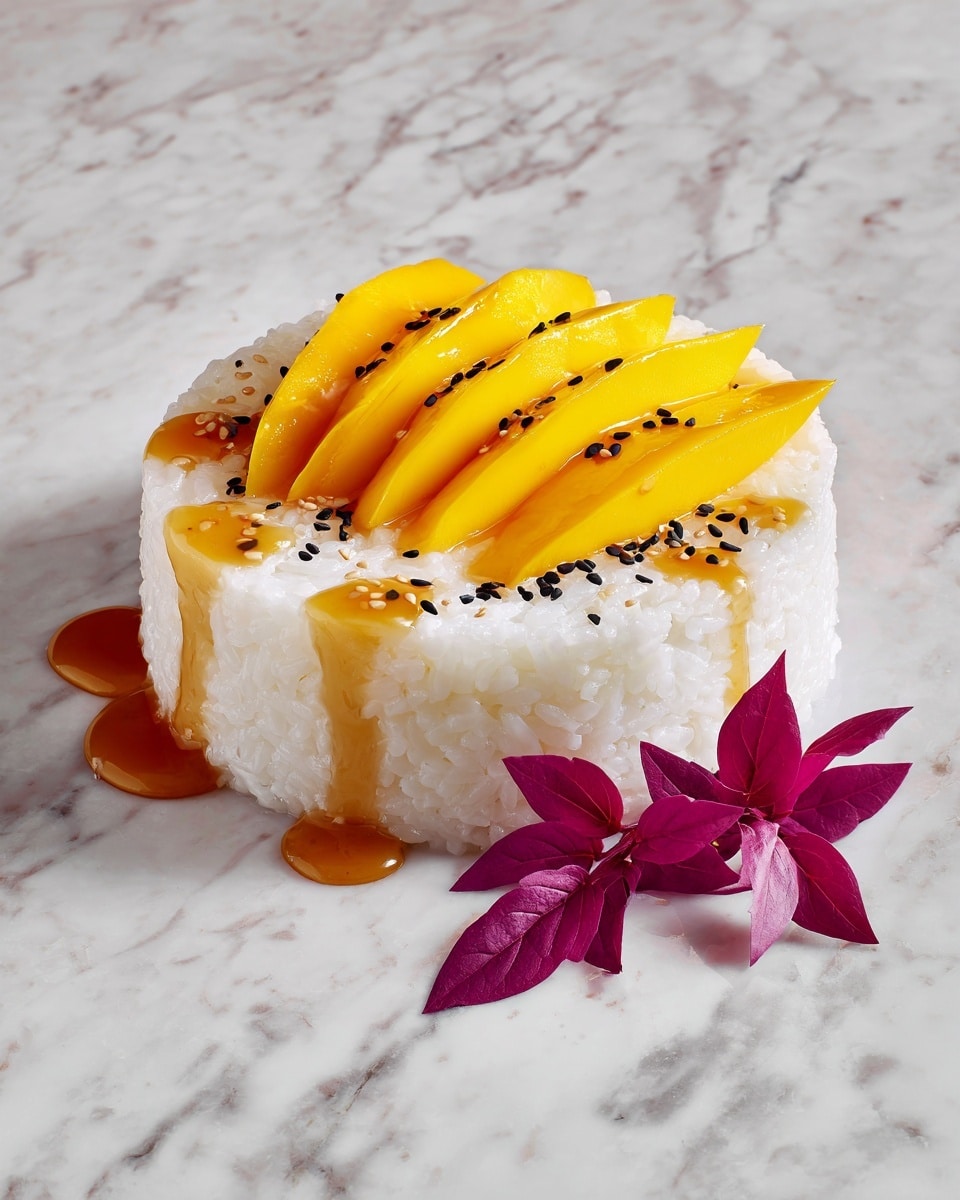
Garnishes
Simple garnishes like toasted sesame seeds or a sprig of fresh mint add a beautiful contrast in texture and color. They make the dish visually inviting and give your guests an extra layer of flavor to enjoy with every bite.
Side Dishes
Though Mango Sticky Rice shines on its own, pairing it with light snacks such as crispy coconut chips or a refreshing Thai iced tea can elevate your dessert experience. The sweet, creamy rice balances wonderfully with liquids and crisp bites.
Creative Ways to Present
Step up your presentation with stylish plating—use small bowls lined with banana leaves or layer sticky rice and mango slices in clear glasses for a trendy parfait style. The vibrant colors are Instagram-worthy and will impress everyone at your next gathering.
Make Ahead and Storage
Storing Leftovers
Sticky rice is best enjoyed fresh but can be stored in an airtight container in the refrigerator for up to 2 days. Keep the mango slices separate from the rice to maintain their texture and freshness.
Freezing
While freezing isn’t ideal for this dessert due to texture changes, you can freeze cooked sticky rice alone for up to a month. Thaw it in the refrigerator and gently steam to revive its softness before serving with fresh mango and sauce.
Reheating
Reheat sticky rice by steaming it again or microwaving with a damp towel covering it to maintain moisture. Warm it gently to avoid drying out, then add fresh coconut milk and mango just before serving to keep that authentic taste intact.
FAQs
Can I use regular jasmine rice instead of glutinous rice?
Unfortunately, regular jasmine rice won’t give you the sticky, chewy texture essential for authentic Mango Sticky Rice. Glutinous rice is key to achieving the right consistency and feel of the dish.
How ripe should the mango be?
Look for mangoes that are golden-yellow with a sweet aroma and yield slightly to gentle pressure. Overly hard mangoes won’t be sweet enough, while overly soft ones can be mushy.
Is it necessary to soak the rice overnight?
Soaking the rice for at least 4 hours softens the grains, ensuring even cooking. Overnight soaking is ideal but if short on time, 4 hours is the minimum to achieve the best texture.
Can I make this vegan?
This classic recipe is already naturally vegan since it uses coconut milk instead of dairy. Just be mindful to use sugar that’s certified vegan if that concerns you.
What can I substitute for cornstarch?
If you don’t have cornstarch, potato starch or arrowroot powder makes a good thickening substitute for the mango sauce. Use the same amount and mix with cold water before adding to the heated coconut milk.
Final Thoughts
Mango Sticky Rice: The Ultimate Guide to Thailand’s Sweet Treat Recipe is more than just a dessert—it’s a celebration of flavors and textures that bring a bit of tropical magic into your kitchen. Once you try this recipe, you’ll understand why it’s cherished across the world. So go ahead, gather those ingredients, and share this sweet treasure with friends and family. Your taste buds will thank you for the journey!
Print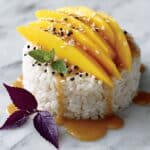
Mango Sticky Rice: The Ultimate Guide to Thailand’s Sweet Treat Recipe
- Total Time: 45 minutes plus soaking time
- Yield: 6 servings 1x
- Diet: Vegetarian
Description
Mango Sticky Rice is a beloved traditional Thai dessert featuring soft, chewy glutinous rice infused with rich coconut milk, paired with sweet ripe mango slices and topped with a luscious coconut sauce. This recipe guide walks you through soaking, steaming, and flavoring the sticky rice while preparing a smooth, thick mango sauce for a delightful balance of creamy, sweet, and fruity flavors.
Ingredients
Sticky Rice
- 1 ½ cups glutinous rice (sweet rice), also known as sticky rice
- 1 ½ cups water, for soaking
Coconut Milk Mixture for Rice
- 1 can (13.5 oz) full-fat coconut milk
- ½ teaspoon salt
- 2 tablespoons granulated sugar
Mango Sauce
- ½ can (6.75 oz) full-fat coconut milk
- ¼ teaspoon salt
- 1 tablespoon granulated sugar
- 1 teaspoon cornstarch
- 1 tablespoon cold water
Other Ingredients
- 2 ripe mangoes, peeled and sliced
- Toasted sesame seeds (optional)
Instructions
- Soak the Rice: Place glutinous rice in a large bowl and add 1 ½ cups of water ensuring the rice is fully submerged. Soak for at least 4 hours or preferably overnight in the refrigerator to soften the grains.
- Drain the Rice: After soaking, drain the rice thoroughly with a fine-mesh sieve and rinse under cold running water until the water runs clear to remove excess starch.
- Steam the Rice: Line a steamer basket with cheesecloth or parchment paper and spread the drained rice evenly inside. Fill the steamer base with water, making sure it doesn’t touch the rice. Bring the water to a boil over medium-high heat, then cover the basket tightly and steam for 20-25 minutes until the rice turns translucent and tender.
- Check for Doneness: Test a small amount of rice; it should be soft and slightly chewy without crunchiness. If still firm, continue steaming for another 5-10 minutes, monitoring water level throughout.
- Prepare Coconut Milk Mixture for Rice: In a medium saucepan, combine the 13.5 oz can of coconut milk, ½ teaspoon salt, and 2 tablespoons sugar. Stir well to dissolve and warm over medium heat until it gently simmers, avoiding boiling.
- Combine Rice and Coconut Milk: Transfer the steamed rice to a large bowl and pour the warm coconut milk mixture over it. Gently fold the mixture to ensure the rice absorbs the coconut milk without mashing the grains.
- Rest the Rice: Cover the bowl with plastic wrap or a towel and let the rice sit for at least 30 minutes, up to an hour, allowing full flavor absorption and creamy texture development.
- Prepare Mango Sauce Ingredients: In a small saucepan, combine the remaining coconut milk (6.75 oz), ¼ teaspoon salt, and 1 tablespoon sugar. Stir until dissolved.
- Create Cornstarch Slurry: Whisk 1 teaspoon cornstarch with 1 tablespoon cold water in a small bowl until smooth to help thicken the sauce.
- Thicken the Mango Sauce: Heat the coconut milk mixture over medium heat and bring to a gentle simmer. Slowly whisk in the cornstarch slurry, stirring constantly, and simmer for 1-2 minutes until sauce thickens enough to coat a spoon. Remove from heat.
- Prepare Mangoes: Peel ripe mangoes and slice the flesh into thin, even slices, ready for serving.
- Plate the Dish: Serve a generous portion of sticky rice on each plate, arrange mango slices alongside, and drizzle the warm mango sauce over both for a harmonious blend of flavors.
- Garnish (Optional): Sprinkle toasted sesame seeds over the dish for extra crunch and a nutty taste. Add a fresh mint sprig if desired for color and aroma.
- Enjoy: Serve immediately to enjoy the warm, creamy, and sweet mango sticky rice at its best.
Notes
- Soaking the rice overnight ensures the best texture but at least 4 hours is sufficient.
- Use glutinous (sweet) rice specifically, as regular rice will not yield the classic sticky texture.
- Do not boil the coconut milk mixtures to prevent separating or curdling.
- Adjust sugar levels according to mango sweetness and personal preference.
- Keep an eye on water levels during steaming to avoid drying out the rice.
- The cornstarch slurry is essential for thickening the mango sauce to coat the rice nicely.
- Serve mango sticky rice warm or at room temperature for optimal taste.
- Prep Time: 15 minutes (plus 4 hours to overnight soaking)
- Cook Time: 30 minutes
- Category: Dessert
- Method: Steaming
- Cuisine: Thai
